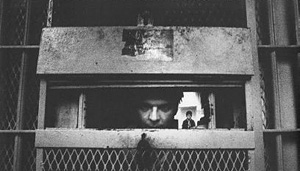
|
 |
 |
 Editorials | Issues | June 2008 Editorials | Issues | June 2008  
Cold Calculation Predicts Death Row Executions
 Paul Marks - New Scientist Paul Marks - New Scientist
go to original


| | The US, the only western democracy to retain the death penalty, executes only a small proportion of the people it sentences to death. | | |
Which inmates on death row will eventually be executed? Many never make the final journey from prison cell to execution chamber - but nobody really understands who will be spared.

Until now. A new computer system can predict which death row prisoners will live and which will be killed - with chilling accuracy. And its dispassionate analysis has confirmed suspicions that the people most likely to be executed are those who have had the least schooling, rather than those who have committed the most heinous crimes.

The US, the only western democracy to retain the death penalty, executes only a small proportion of the people it sentences to death. For instance, just 53 of the 3228 inmates on death row were executed in 2006.

So how were those 53 chosen? "We couldn't see any clear patterns in the data," says computer scientist Stamos Karamouzis, who has been investigating this question with criminologist Dee Wood Harper at Loyola University in New Orleans, Louisiana.

Since the direct approach had failed, the researchers turned to an artificial neural network (ANN) - an intelligent computer system, modelled after the human brain - that is able to deduce how various factors within a jumble of data relate to each other. The system can then take what it has learned and make predictions about a new set of data. Karamouzis has already used ANNs to predict the likelihood that juveniles given parole will reoffend, and to pinpoint the students most likely to drop out of college courses. "ANNs surprise us by revealing non-obvious patterns," he says.

To find out which factors might be linked to executions, the researchers first "trained" their ANN by entering the profiles of 1000 death row inmates between 1973 and 2000. Half of this sample of prisoners had been executed and the other half had survived. Each profile contained 18 factors, including the inmate's sex, age, race, marital status, educational level and information on their capital offences.

They then fed in profiles for 300 more inmates from the same period and asked the ANN to predict what had happened to them. To their astonishment, it correctly predicted the fates of more than 90 per cent of those inmates (International Journal of Law and Information Technology, vol 16, p 6)

The neural network had clearly hit on a strong relationship between the inmates' profiles and their likelihood of execution - but which factors mattered most? To find out, the team repeatedly retrained the ANN from scratch, withholding information about one of the factors each time.

Gender turned out to be the most significant factor - women are rarely executed. Race, which Harper says has been implicated as a key factor in sentencing criminals to death, was not found to be an important factor when it came to the decision to execute.

The most striking factor by far was educational level - the number of years the inmate had spent in high school. This may be crucial because it indicates how well an inmate can manage their appeal process. "This finding confirms that being executed is not about what you've done, but more about your ability to defend yourself," says Simon Shepherd of Death Watch International, a group that campaigns against the death penalty worldwide.

The researchers do not expect their work to have much effect on policy, however. "Until US public opinion shifts, no amount of scientific evidence is going to make any difference," says Harper. But it might be used to argue individual cases. "It raises lots of tricky questions," says Karamouzis. "If it says someone is likely to be executed, would the lawyers give up on saving that individual?" | 
 | |
 |



